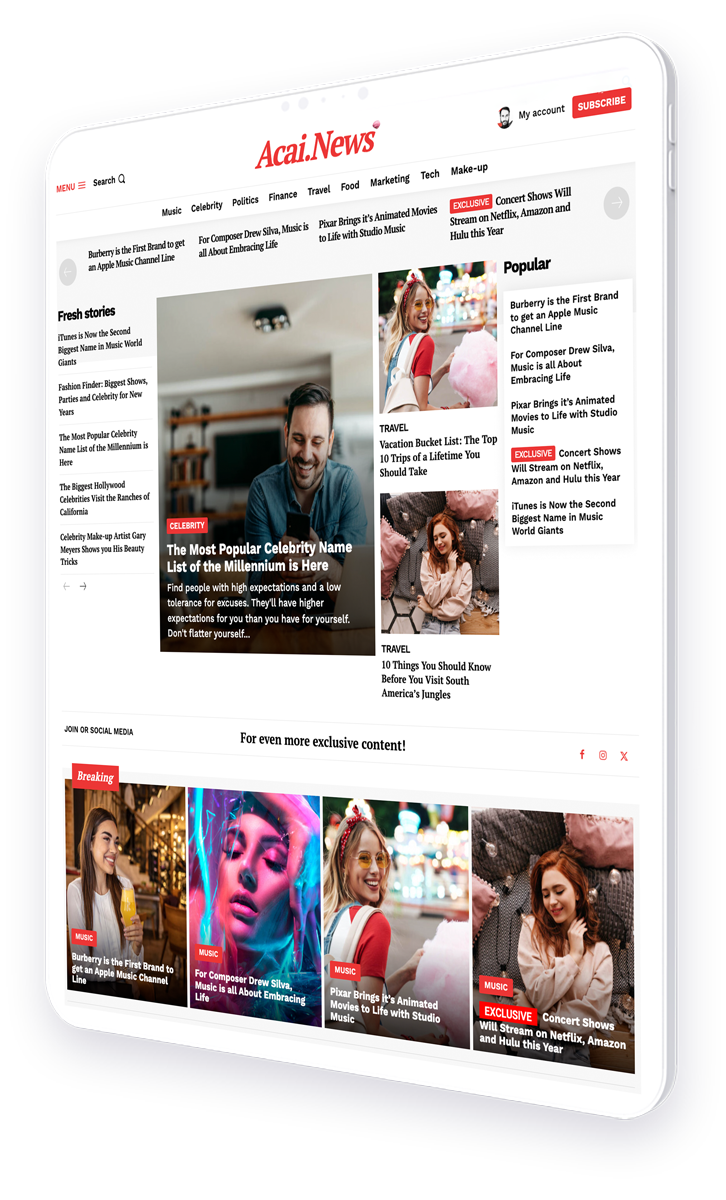A comparison of traditional blogs and AI-generated magazines in terms of user engagement
In the ever-evolving digital content landscape, the rise of AI-powered magazines has sparked a debate: do they outperform traditional blogs in terms of user engagement? As content creators and marketers strive to capture audience attention, understanding the dynamics between these two formats is crucial. This article delves into the engagement metrics of AI-generated magazines and traditional blogs, providing insights into their performance and effectiveness.
Understanding AI-Powered Magazines
AI-powered magazines leverage artificial intelligence to curate, generate, and personalize content for readers. These platforms utilize machine learning algorithms to analyze user preferences, delivering tailored content that resonates with individual interests. The result is a dynamic and interactive reading experience that adapts to the user’s behavior.
Key Features of AI-Powered Magazines
- Personalization: AI algorithms analyze user data to deliver content that aligns with individual preferences.
- Automation: Content creation and curation processes are streamlined, reducing the need for human intervention.
- Interactivity: Enhanced multimedia elements and interactive features engage readers more effectively.
The Traditional Blog: A Staple of Online Content
Traditional blogs have been a cornerstone of online content for decades. They offer a platform for individuals and businesses to share insights, stories, and expertise. While blogs have evolved over time, they remain a popular choice for content creators due to their simplicity and accessibility.
Strengths of Traditional Blogs
- Authenticity: Blogs often provide a personal touch, allowing writers to connect with their audience on a deeper level.
- SEO Benefits: Well-optimized blogs can drive organic traffic through search engines.
- Community Building: Blogs foster a sense of community through comments and discussions.
Comparing Engagement Metrics
To determine whether AI-powered magazines outperform traditional blogs, it’s essential to analyze key engagement metrics. These metrics provide insights into how users interact with content and the overall effectiveness of each format.
Time Spent on Page
One of the primary indicators of engagement is the amount of time users spend on a page. AI-powered magazines often excel in this area due to their personalized content delivery. By tailoring articles to individual preferences, readers are more likely to stay engaged for longer periods.
Click-Through Rates (CTR)
Click-through rates measure the percentage of users who click on links within the content. AI-powered magazines can achieve higher CTRs by strategically placing relevant links based on user behavior analysis. This targeted approach increases the likelihood of users exploring additional content.
Social Sharing
Social sharing is a crucial metric for measuring content virality. AI-powered magazines often incorporate social sharing buttons and encourage readers to share articles with their networks. This strategy can lead to increased visibility and engagement.
Case Studies: Real-World Examples
To illustrate the impact of AI-powered magazines and traditional blogs, let’s explore a few real-world examples.
Case Study 1: AI-Powered Magazine Success
A leading AI-powered magazine, “Tech Trends,” implemented machine learning algorithms to analyze reader preferences. By delivering personalized content, they achieved a 30% increase in time spent on page and a 25% boost in click-through rates. This success demonstrates the potential of AI-driven content to enhance user engagement.
Case Study 2: Traditional Blog Triumph
In contrast, a popular traditional blog, “Healthy Living Insights,” focused on building a strong community through authentic storytelling. By fostering discussions and encouraging reader contributions, they achieved a 40% increase in social sharing and a 20% rise in organic traffic. This case highlights the enduring appeal of traditional blogs in creating meaningful connections.
Challenges and Considerations
While AI-powered magazines offer numerous advantages, they also present challenges that content creators must address.
Data Privacy Concerns
The use of AI algorithms requires access to user data, raising privacy concerns. Content creators must prioritize data protection and transparency to maintain user trust.
Content Quality
AI-generated content may lack the depth and authenticity of human-written articles. Striking a balance between automation and quality is essential to ensure engaging and valuable content.
Conclusion: The Future of Digital Content
In the battle between AI-powered magazines and traditional blogs, both formats have their strengths and weaknesses. AI-powered magazines excel in personalization and interactivity, while traditional blogs offer authenticity and community building. Ultimately, the choice between these formats depends on the goals and preferences of content creators and their target audience.
As technology continues to advance, the integration of AI in content creation will likely become more prevalent. Content creators must adapt to these changes while maintaining a focus on delivering valuable and engaging experiences for their readers. By understanding the unique advantages of each format, creators can make informed decisions that align with their content strategy.
For more insights into the impact of AI on digital content, visit Forbes.




